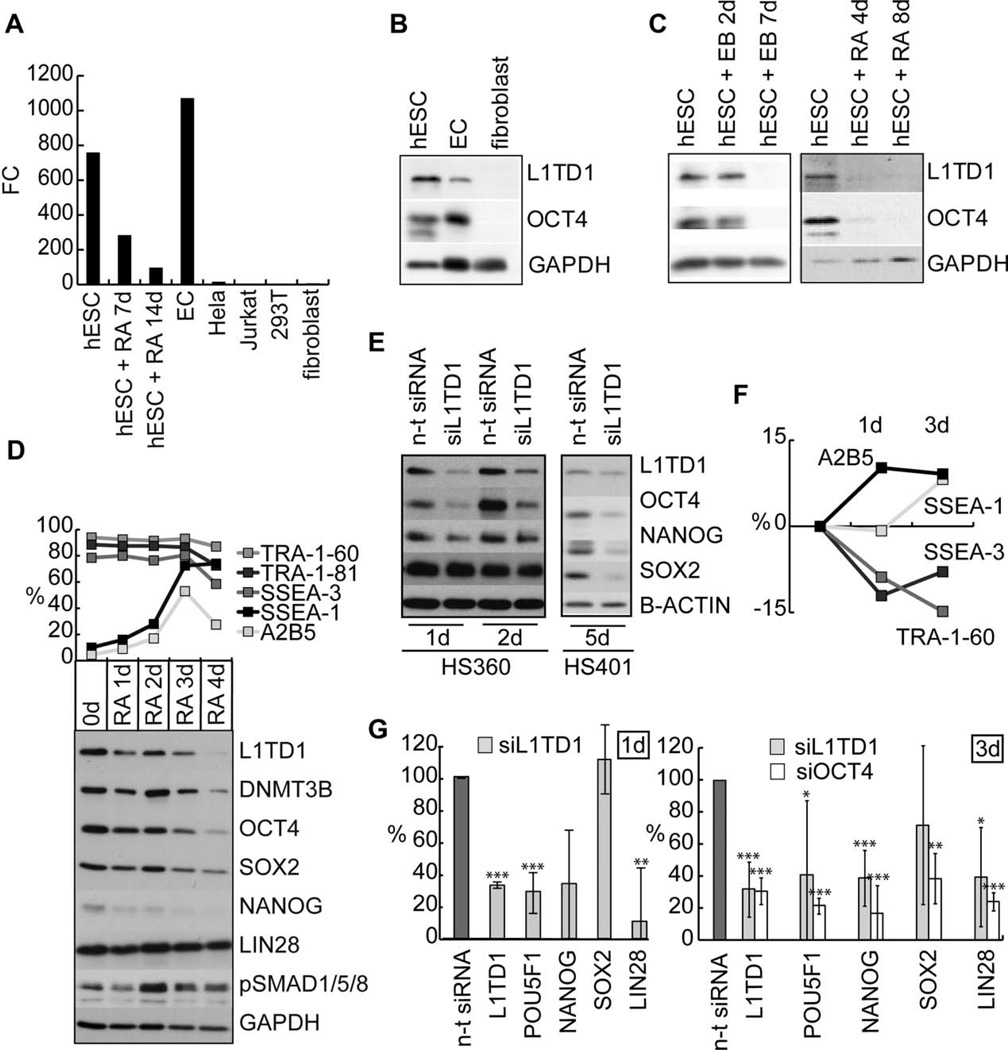Figure 1.
L1TD1 is highly expressed in hESCs and required for self-renewal. (A): Real-time PCR analysis of L1TD1 expression in hESCs (HS401), RA-induced differentiation (HS401), EC cells (NTERA2), Hela, Jurkat, 293T, and human fibroblasts. (B): Western blot analysis of L1TD1 and OCT4 expression in hESCs (H9), ECs (2102Ep), and human fibroblasts. (C): Western blot analysis of L1TD1 and OCT4 expression in EB and RA-induced differentiation of hESC (H9 and HS401, respectively). (D): Flow cytometry and Western blot analysis of selected pluripotency and differentiation markers in RA-induced differentiation (hESC line H9). Average data from two replicate cultures. (E): Western blot analysis of the OCT4, SOX-2, and NANOG 1, 2 (oligo 5), and 5 (oligo 2) days after siRNA knockdown of L1TD1 (hESC lines HS360 and HS401). (F): Flow cytometry analysis of pluripotency (SSEA-3, TRA-1-60) and differentiation (A2B5 and SSEA-1) markers 1 and 3 days after knockdown of L1TD1 in relation to the n-t control (hESC line H9) (siRNA oligo 5). Average data from two replicate cultures. (G): Real-time PCR analysis of L1TD1 and pluripotency markers: POU5F1 (OCT4), NANOG, SOX2, and LIN28 1 and 3 days after knockdown of L1TD1. Average data of hESC lines: H9 and HS360 for day 1 (siRNA oligo 1 and 5), H9 and HS237 for day 3 (siRNA oligos 2 and 5). p values: *, ≤ 0.05; **, ≤ 0.01; ***, ≤ 0.001. Abbreviations: EB, embryoid body; EC, embryonal carcinoma; FC, fold change; hESC, human embryonic stem cell; n-t, nontargeting; PCR, polymerase chain reaction; RA, retinoic acid; siRNA, small interfering RNA.

